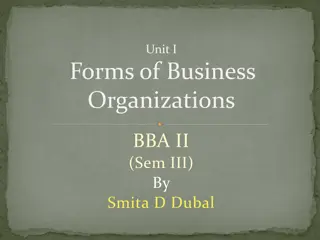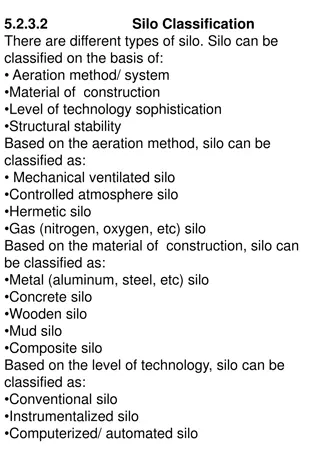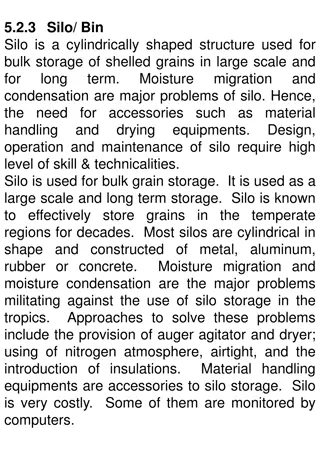Understanding the Silo Effect in Business Organizations
Organizational silos in companies hinder communication between units, leading to inefficiencies and potential losses. The Silo Effect occurs due to the lack of cross-departmental communication, often exacerbated by different departmental goals and incentives. To eliminate the Silo Effect, companies can adopt process-oriented approaches and utilize Enterprise Resource Planning (ERP) systems to facilitate seamless information flow across departments.
Download Presentation

Please find below an Image/Link to download the presentation.
The content on the website is provided AS IS for your information and personal use only. It may not be sold, licensed, or shared on other websites without obtaining consent from the author. Download presentation by click this link. If you encounter any issues during the download, it is possible that the publisher has removed the file from their server.
E N D
Presentation Transcript
Organizational Silos In Your Company Organizational Silos In Your Company In business a Silo is a department, service unit, operating unit, business unit that does not have good communication with other units. The Silo operates only for its own benefit and not for the benefit of the entire enterprise. One Silo usually points to other silos when there are problems or issues. Silos have may have their own teams, but they are not part of a broader team the company as a whole.
Data Silo Siloed data is a group of data accessible to only a few employees, departments, or leaders in the workplace.
What is the Silo Effect, and why does it occur? What is the Silo Effect, and why does it occur? The Silo Effect refers to the lack of cross-departmental communication. why businesses tend to generate silo effect. 1. Large Number of Organizational Units: As the company gets larger, the number of small business units within it increases. Each business unit specializes in a particular area involving the business. As a result of this specialization, people within a group know what they are supposed to do very well, but do not have a good idea of what other teams are doing. 2. Different Encouragement Schemes: The goals and encouragement (incentives) of departments within a company vary. To understand this further, let us take the example of a chair manufacturing company. The sales manager s goal is to maximize sales, and thus he will strive to sell as many chairs as possible. As a result, in the sales forecast, he might order his team to sell 250 chairs in a week. Now, the production manager that overlooks the production of the chairs may have a different goal. He has to ensure that the workers are not overworked and produce good quality chairs on a day to day basis. Thus, to maintain the quality of the chairs produced, he may limit the number of chairs manufactured to 100 per week. Such a difference between goals can lead to business losses.
How can we eliminate the Silo Effect? How can we eliminate the Silo Effect? Companies can eliminate the Silo Effect by having a process-oriented view of the organization. In the context of the above example, the sales department and production department should be aware of each other s goals and strategies. Thus, the information should flow seamlessly between the departments of an organization. Enterprise Resource Planning (ERP) systems are widely used to break the Silo Effect. ERP systems eliminate department Silos by uniting departments like inventory, production, marketing, sales, and accounting through a centralized database.
























